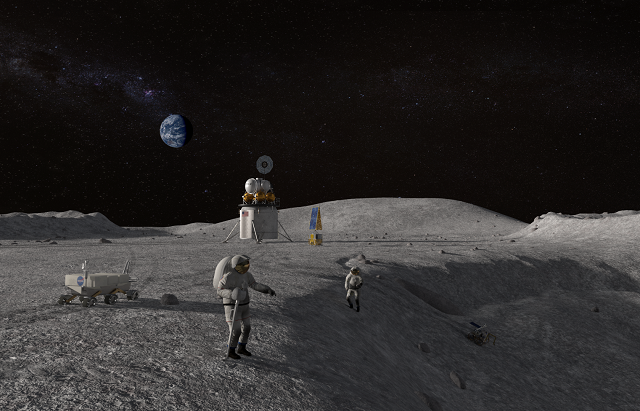The Moon Is Radioactive
“A long-term stay on the Moon will expose astronauts’ bodies to high doses of radiation.”
We were supposed to have Moon bases by now. That’s what everyone thought after the first Moon landings in 1969. But new research suggests that the radiation levels on the Moon may be way too high for people to actually live there some day.
Space is filled with radiation. It’s not clear yet where it all comes from, but we do know that the sun emits a great deal of harmful rays. On Earth the atmosphere acts as a giant filter protecting us from exposure. But too much sun can lead to illnesses such as skin cancer.
No such filter exists in open space. This is why all manned space craft as well as an astronaut’s space suit are lined with insulation to protect against radiation. But such insulations are limited and may only provide temporary protection.
Now we have new information about the Moon’s radiation levels thanks to the Chinese probe Chang’e 4, which landed on the dark side of the Moon on 3 January 2019. The Apollo astronauts who actually stood on the Moon’s surface were not equipped with devices that could get an accurate reading of the Moon’s radiation levels.
Results of the research were published in Science Advances.
The research was conducted in a joint Chinese-German effort with the German Aerospace Center’s Institute of Aerospace Medicine in Cologne.
Physicist Thomas Berger from the DLR Institute of Aerospace Medicine stated, “The radiation exposure we measured is a good indication of the radiation inside a spacesuit. The measurements give us an equivalent dose rate – the biologically weighted radiation dose per unit of time – of around 60 microsieverts per hour. For comparison, during a long-haul flight from Frankfurt to New York, the dose rate is five to 10 times lower than this. On Earth’s surface, it is some 200 times lower. In other words, a long-term stay on the Moon will expose astronauts’ bodies to high doses of radiation.”
So what will future Moon explorers need to do in order to protect themselves? Robert Wimmer-Schweingruber, of the Christian-Albrecht University in Kiel, Germany suggests that they use Moon rocks to line any habitats that they build there. He says that this will help to protect them from the radiation. That is, unless, someone develops newer anti-radiation tech.
Otherwise, people will be limited to no longer than a two month stay on the Moon in addition to the two week round trip getting there and back.
Fron the study:
Human exploration of the Moon is associated with substantial risks to astronauts from space radiation. On the surface of the Moon, this consists of the chronic exposure to galactic cosmic rays and sporadic solar particle events. The interaction of this radiation field with the lunar soil leads to a third component that consists of neutral particles, i.e., neutrons and gamma radiation. The Lunar Lander Neutrons and Dosimetry experiment aboard China’s Chang’E 4 lander has made the first ever measurements of the radiation exposure to both charged and neutral particles on the lunar surface. We measured an average total absorbed dose rate in silicon of 13.2 ± 1 μGy/hour and a neutral particle dose rate of 3.1 ± 0.5 μGy/hour.
Read more about: Chang’e 4, Christian-Albrecht University, German Aerospace Center’s Institute of Aerospace Medicine, Radiation, Robert Wimmer-Schweingruber, The Moon




